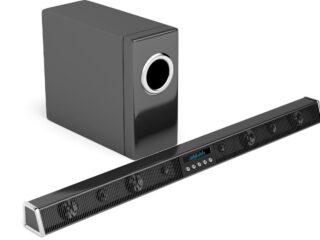
In recent years, the automotive industry has witnessed a profound transformation driven by advancements in technology. At the heart of this transformation is the adoption of software-defined architecture, a paradigm shift that redefines how vehicles are designed, developed, and experienced. This approach significantly impacts vehicle functions and development, offering new possibilities for innovation, efficiency, and user experience.
What is Software-Defined Architecture?
Software-defined architecture (SDA) refers to a system design where software controls and manages hardware resources and functionalities. In traditional automotive systems, many functions are embedded in hardware components, with limited ability to be modified or updated post-manufacture. For instance, the control of engine performance or infotainment systems was typically hard-coded into hardware modules, making any changes or upgrades a complex and costly process involving physical modifications.
In contrast, this kind of future-proof vehicle architecture abstracts these functionalities into software layers. This means that instead of relying solely on physical components, vehicles operate on a software-driven platform that can be easily updated and reconfigured. This shift not only enhances flexibility but also allows for real-time adjustments and improvements, leading to a more dynamic and adaptable vehicle ecosystem.

Impact on Vehicle Functions
1. Enhanced Flexibility and Customization
One of the most significant impacts of software-defined architecture is the ability to offer enhanced flexibility and customization. In traditional vehicles, features were often fixed at the time of manufacturing. If a manufacturer wanted to add or modify a feature, it typically required hardware changes or even a complete redesign of certain systems.
With software-defined architecture, many of these functions can be managed and adjusted via software updates. For example, features like adaptive cruise control, lane-keeping assist, or even performance enhancements can be activated or refined through software. This allows manufacturers to offer a more personalized driving experience tailored to individual preferences and regional requirements.
2. Over-the-Air (OTA) Updates
One of the most revolutionary aspects of software-defined vehicles is the ability to perform over-the-air (OTA) updates. Similar to how smartphones and computers receive software updates, vehicles equipped with a software-defined architecture can be updated remotely. This capability eliminates the need for physical dealership visits for many types of updates and maintenance.
OTA updates can enhance vehicle performance, fix bugs, and introduce new features without the need for traditional service visits. For instance, a manufacturer might roll out an update that improves the vehicle’s fuel efficiency or adds new infotainment apps. This not only improves the vehicle’s functionality over time but also strengthens the connection between the manufacturer and the customer, offering continuous value and support.

3. Advanced Driver Assistance Systems (ADAS)
Advanced Driver Assistance Systems (ADAS) represent one of the most critical areas impacted by software-defined architecture. ADAS includes technologies like automatic emergency braking, lane departure warnings, and adaptive cruise control. These systems rely heavily on sophisticated algorithms and real-time data processing, which are best managed through software.
Software-defined architecture allows for the integration and enhancement of ADAS functionalities through software updates. As new algorithms and data processing techniques are developed, they can be incorporated into the vehicle’s systems without requiring new hardware. This continuous improvement capability is crucial for the advancement of autonomous driving technologies, as it enables vehicles to learn and adapt to new driving conditions and scenarios.
4. Infotainment Systems
Infotainment systems are another area where software-defined architecture makes a significant impact. Traditional infotainment systems were often limited in functionality and could quickly become outdated as technology evolved. With a software-defined approach, these systems can be updated and upgraded with new features and applications through OTA updates.
This means that vehicles can offer the latest connectivity options, multimedia features, and user interfaces without requiring physical hardware changes. For example, new apps, navigation features, or voice recognition capabilities can be added to the infotainment system over time, ensuring that the vehicle remains current with technological advancements.
Impact on Development and Innovation
1. Accelerated Development Cycles
Software-defined architecture enables faster development and deployment of new features. In a traditional automotive development cycle, integrating and testing new hardware components can be time-consuming and costly. With a software-driven approach, developers can test and iterate on new features more quickly, deploying updates through software rather than hardware changes.
This acceleration of development cycles allows manufacturers to respond more rapidly to market demands and technological advancements. For instance, if a new safety feature becomes available or a software improvement is identified, it can be integrated and deployed through software updates, rather than waiting for the next model year or redesign.
2. Cost Efficiency
The shift to software-defined architecture also has implications for cost efficiency. Traditional hardware-based systems require significant investment in physical components and their integration into the vehicle. Software-defined systems reduce the need for extensive hardware changes and allow for the reuse of existing components with software updates.
This cost efficiency extends to the manufacturing process as well. Vehicles equipped with software-defined architecture can be produced with more standardized hardware, reducing the need for custom components. The ability to update and enhance features through software also reduces the costs associated with recalls and service interventions.
3. Enhanced Collaboration and Ecosystem Development
The move towards software-defined architecture fosters greater collaboration between automakers, technology providers, and software developers. As vehicles become more reliant on software, partnerships with tech companies and developers become increasingly important. This collaborative environment encourages innovation and the development of new applications and services that can be integrated into the vehicle’s ecosystem.
Moreover, software-defined architecture enables the creation of a more open and flexible platform for third-party developers. This can lead to a broader range of applications and services being available to consumers, enhancing the overall driving experience and offering more opportunities for personalized features.
Future Directions
As software-defined architecture continues to evolve, the automotive industry is poised for even greater advancements. The integration of artificial intelligence (AI) and machine learning into software-defined systems promises to further enhance vehicle capabilities, enabling more sophisticated driver assistance features and autonomous driving technologies.
Additionally, the growth of vehicle-to-everything (V2X) communication technologies will leverage software-defined architecture to improve vehicle connectivity and safety. Vehicles will be able to communicate with each other, infrastructure, and even pedestrians, creating a more connected and intelligent transportation ecosystem.
Conclusion
Software-defined architecture represents a fundamental shift in how vehicles are designed, developed, and experienced. By abstracting vehicle functionalities into software, automakers can offer greater flexibility, customization, and continuous improvement through OTA updates. This approach accelerates development cycles, enhances cost efficiency, and fosters collaboration within the automotive ecosystem. As technology continues to advance, software-defined architecture will play a pivotal role in shaping the future of transportation, driving innovation, and delivering increasingly sophisticated and personalized driving experiences.









